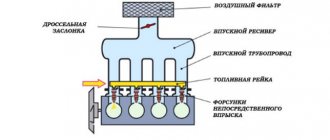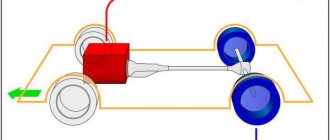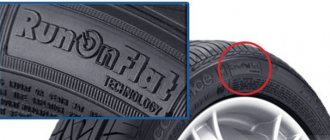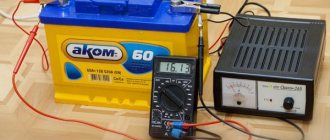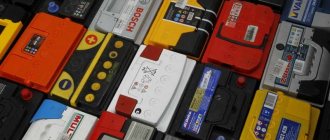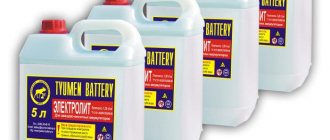Modern science is developing at an accelerated pace - now nothing stands still. Mechanisms familiar to many are being replaced by their modernized and more innovative counterparts. One of the most striking examples is the modern car. Each unit is now different from those “ancestors” that were produced just ten years ago. It’s unlikely that anyone could have seriously thought before that a modern car owner would be able to charge his electric car right under his window from a regular household outlet. Today this is a reality, and the most common one at that. Another striking example of technology development is the gel battery. We will consider its pros and cons in our article. Everyone who has used these believes that this is a fairly good alternative to traditional acid batteries. However, have scientists managed to correct all the shortcomings of traditional acid-lead analogues in gel batteries?
Gel batteries: what are they?
Several years ago, gel car batteries began to appear on the automotive market, along with traditional batteries. Nobody knew their pros and cons yet. And the principle of operation was initially practically no different from a lead-acid battery.
The difference between this battery is the special chemical elements in the electrolyte. Due to these elements, it is located inside the battery in a gel state. The electrolyte really resembles jelly. Moreover, externally, such a battery has all the features of a standard battery.
Over time, production technologies developed, and two types of gel batteries appeared:
- A.G.M.
- GEL.
Below we will look at them in more detail.
Charging Recommendations
Gel batteries are characterized by high sensitivity to current and voltage. That is why at the time of charging it is necessary to control the parameters of the supplied fuel with high accuracy. It is worth considering that chargers that are used to work with traditional lead-acid batteries are not suitable for working with Gel batteries. Features of the charging process include:
- Select the correct charger, which is recommended by the battery manufacturer.
- In order to eliminate the possibility of damage to the energy source, it is recommended to use a current strength that does not exceed 10% of the capacitance value. For example, if the capacity is 60 Ah, then a current of 6 amperes should be supplied.
- For urgent charging, it is recommended to apply a current equal to 30% of the full capacity. A sticker is often placed on the battery case with the recommended maximum charging current.
- It is important to take into account the fact that the supplied voltage should not exceed 14.5 V. If such a current is supplied, then the internal structure is destroyed. High voltage causes the gel to heat up, after which it becomes a liquid.
- Gel batteries are manufactured with the ability to use a charging mode to maintain the required energy level at the time of service. It is recommended to use this mode for periodic charging.
We recommend: Restoring a gel battery at home
Particular attention should be paid to selecting a suitable charger. A conventional appliance may shorten the life of the power supply. The required charger must have the following properties:
- If the device becomes too hot or when charging is complete, the device should stop supplying current. Otherwise, the gel may become very hot and turn into liquid.
- The voltage must be constant. Even small differences in the indicator will lead to a decrease in the service life of the structure.
- Temperature compensation determines how the charging mode changes depending on the temperature of the battery.
- Accurate control of the current indicator.
The purchased charger for gel batteries can be used to recharge a conventional battery with liquid electrolyte. Therefore, you can purchase it to service gel and regular power sources.
AGM technology
These three letters stand for “absorbent glass mats.” In fact, these “glass mats” are just ordinary fiberglass. It is located inside the device, between the positive and negative lead plates. This glass fabric contains a jelly-like electrolyte in a bound state. Don't think that this is innovation. In fact, the composition of the electrolyte is practically no different from the traditional mixture. There's acid here too. The electrolytic liquid is contained in a special fiberglass separator. Due to this, the jelly does not spread.
This feature makes it possible to operate the battery in almost any position. You can even lay it on its side and it will work. The battery is completely safe. Harmful substances that tend to evaporate are now securely held in the pores of fiberglass and are used only for chemical reactions. This is the most affordable gel battery for cars. Its pros and cons correspond to cost and technology. The standard service life of such batteries is only 5 years. However, this figure is not the limit. Manufacturers have models that can last for decades. In this case, the battery will not lose its characteristics.
Gel battery lifespan
Swollen gel battery
The service life of gel batteries declared by the manufacturer is approximately 10 years. It should be assumed that this is the maximum operating time of the device under ideal and non-replaceable conditions of use.
Gel batteries are subject to rapid wear under the following conditions:
- A sharp and radical change in temperature conditions. A significant reduction in service life can result from a drop to −30°c and an increase above +50°c. This is due to changes in the electrochemical activity of the battery under such exposure.
- The battery in the device is constantly undercharged.
- The battery remains on recharge for a long time, despite the device being fully charged.
I would like to note that an increase in temperature during operation also affects the increase in the development of corrosion of the plates in the unit.
Shelf life and application features
A standard gel battery can withstand up to 200 recharge cycles and complete discharge over its entire service life. That's not all. The battery can withstand 50 cycles at half discharge and up to 800 at 30% discharge level. Experts say that devices built on this technology are suitable for use in backup power systems. If you fully comply with the optimal temperatures and operating rules, then there is every chance that the battery will be able to work out the period stated by the manufacturer.
How to operate and maintain a gel battery?
Tips for proper operation are simple:
- monitor the stable operation of the generator, as well as electrical equipment systems that are directly connected to the battery, namely, carry out timely diagnostics of the on-board network;
- operation and storage at temperatures from minus 35 to plus 50 should not exceed 6 months;
- do not let it reach a deep discharge;
- ensure cleanliness of the housing during operation;
- Charge the battery promptly and correctly.
GEL technology
So, we looked at fiberglass gel batteries for cars. Their pros and cons are the ability to work in any position, safety for people, the need for strict adherence to temperature conditions, short service life and short cyclic life.
Batteries made on the basis of GEL technology have higher technical characteristics. There is a greater cyclic resource, energy intensity and other advantages. These batteries can sometimes withstand up to 800 charge/discharge cycles without losing capacity. Motorists have the opinion that the name of this technology can be deciphered as helium. However, you need to understand that this is a gel. There is a special separator between the lead plates of the battery. In the case of these devices, there is silica gel inside. It fills the entire internal space at the production stage. The silica gel then hardens and becomes hard as a result. At the same time, it will have a huge number of pores. This is where the silica gel is held.
History of the creation of gel batteries
Two large American concerns, Exide and EnerSys, having brought together specialists from all over the world, developed gel batteries in the 80s and introduced them to the electrical equipment market. They were originally intended for use in the field of radiocommunication services. Then dimensional models appeared for other needs.
The developers of gel batteries set out to create a battery with a long service life, a long period of charge storage, ease of maintenance and low manufacturing costs. The task was to replace the liquid electrolyte in the form of acid and alkaline solutions with a solid substance.
A solution was found in the invention of a gel, which was obtained by adding a thickener to a solution of sulfuric acid. As a result, the solution took on the appearance of a dense jelly – a gel.
Advantages of GEL batteries
Since the entire internal space in the device is occupied by a silica gel separator, any possibility of plate shedding can be completely eliminated in these batteries. This has the best effect on the resource and service life. Even more - this design made it possible to improve the overall technical characteristics. This had a positive effect on the service life and resistance of the device to deep discharge.
Car owners have already appreciated gel batteries for cars. There really are positive reviews about them. There are a lot of them. You can also hear these reviews from owners even just on the street. And even if the nominal service life of a GEL battery is not much higher than the service life of AGM batteries, but as for the number of charge/discharge cycles, here this figure will be no more than 50% higher, motorists note.
Difference between GEL and AGM
The batteries have more similarities than differences, but they still exist. An AGM battery is created on special absorbent glass mats that allow the electrolyte not to spread or evaporate. Since the plates are arranged tightly, the battery capacity increases. The electrolyte is securely stored inside, and this makes it possible to place the battery on its side. AGM batteries can withstand more than 200 full discharge cycles and are not susceptible to frost. They still contain liquid electrolyte, so they can produce fumes.
In GEL batteries, the electrolyte is a thick gel. Therefore, there is no fumes, the battery is safer and more environmentally friendly. Both technologies use purified lead, but GEL can withstand twice as many deep discharge cycles, up to 400. The service life is also increased.
Did you have or do you have a Gel battery ? Then tell us in the comments about your impressions of it, this will greatly help other car enthusiasts and make the material more complete and accurate.
Resource
To put it simply, a standard gel battery made using this technology can easily withstand about 350 discharge cycles at full depth of discharge, up to 550 at half and up to 1200 cycles at 30% discharge.
Thus, when deciding to purchase such gel batteries for a car, their characteristics must be taken into account. You can also save money on them - they are more resistant to deep discharges, which means they practically do not need service and repair. Due to the design features, these devices are subject to the sulfation process to a much lesser extent. This means that they can easily withstand two or more days in a state of complete discharge.
Gel battery for car 65 Ah
Depending on the purpose of gel batteries, they are designed for a specific type of load. Thus, batteries of the Optima brand, different in orientation, can be classified by the color of the lids of the cylindrical cans. 12 volt gel batteries of different capacities are designed for:
- yellow top – seasonal use, traction;
- red cover – starter, operates regardless of ambient temperature from -40 to +40 degrees;
- blue cover – starter-traction, suitable for water transport, resistant to high humidity, fast charging.
They produce 12 V batteries with capacities from 38 to 90 A/h; the products differ in size and price. So a gel battery for the Optima car 75 Blue TOP8052-188-75 Ah costs 21 thousand rubles, and with a capacity of 55 Ah costs 17,650 rubles. The battery is composed of a different number of cans.
Prismatic batteries with gel fill can be purchased cheaper. The traction battery Delta GX 12-65 12B 65 Ah costs 11,600 rubles. Deep discharge batteries are used for installation on outboard motors.
When choosing a gel battery for a car or other equipment, you need to consider the rating. The indicator is created based on customer demand. In 2021, the best products in this class were considered:
- Optima Yellow Top, USA, made in Mexico;
- Varta Ultra Dynamic, Germany;
- Delta GX 12-60, China.
It is difficult to decipher the labeling of gel batteries for various equipment and cars. European, Asian, American standards are used. Russian batteries mark products in accordance with GOST 959-2002. The same indicators are encrypted in models of foreign brands, but in their own units of measurement and in a different design.
Advantages and disadvantages
Regardless of what type of gel battery it is, it definitely has pros and cons. Let's look at them. Among the main advantages are the following:
- The battery has high inrush currents.
- The electrolyte will not leak, even if the housing is seriously damaged.
- Such batteries do not require even minimal maintenance - they are even made in a maintenance-free case.
- The battery can work in any position.
- Finally, if the electronics are good, the battery life can be significantly longer than its lead-acid cousins.
Disadvantages include poor resistance to overcharging. During the charging process, it is recommended to constantly monitor the process and watch the indicator. There is also poor resistance to low temperatures. Finally, a significant drawback is the high price.
Battery Maintenance
The device does not require periodic maintenance during operation. If there is a drop in the capacity, accompanied by swelling of the body, then it is necessary to remove the plastic plugs and inspect the cans. If electrolyte has fallen off due to lack of water, further use of the battery is not recommended.
It is not possible to restore the product by adding an electrolyte; there are no special reagents for reactivating the substance.
Is it possible to fill a gel battery with electrolyte or water?
To restore the operating parameters of the battery, it is allowed to add distilled water to the jars (it is not recommended to introduce electrolyte). Before starting topping up, you must disconnect the power source from the external circuit. Then you will need to remove the plastic lid and remove the rubber plugs covering the jars.
The liquid is applied with the nozzle of a syringe or a rubber bulb, 2-3 ml each, onto the surface of the separators, and then the device is left for 8-10 hours (to saturate the separating plates with the solution).
Syringe for adding water to the battery.
If all the liquid has been absorbed, then you need to add another 2-3 ml of water.
The procedure is repeated until the absorption of the solution stops; excess liquid is removed with a syringe. Measure the voltage at the terminals, and then connect the external power supply. After charging with low current, the battery parameters are partially restored, but the capacity is reduced by 30-50%. Long-term use of the product is not recommended, since the battery will not ensure reliable starting of the engine.
Not for Russian winter
That's all the shortcomings. What can we say in the end? This is a good option in various emergency power supply systems. But in our climate, it is better not to use gel batteries for a car. There may be some difficulties with them.
And even though they have a lot of attractive advantages, these batteries cannot become a reliable assistant in Russian climatic conditions - it is enough to use the battery for at least one winter, and it will fail much earlier than expected. But if you really want to, then no one can prohibit the use of these devices. The most important thing is that the on-board network can support the required charging modes. In the case of domestic cars, this can be quite problematic, even if the voltage regulator is working properly and will be replaced with 16 V. However, gel batteries for the car are perfect for owners of new foreign cars. The pros and cons of their use in this case do not play a big role. And the gel battery will completely satisfy the car’s electrical needs.
How are gel batteries arranged?
You probably know how the average battery works.
It consists of plates consisting of an alloy of lead and antimony, which are placed in a liquid electrolytic medium.
The rapid failure of such systems is explained by the shedding of lead sheathing. It becomes unable to hold a charge, forcing the driver to buy a new battery pack or try to rebuild it.
The design of a gel battery is approximately the same.
The main difference is the use of a jelly-like electrolyte rather than a liquid one.
Thanks to this solution, manufacturers were able to solve many important problems:
- The risk of leakage of liquid, which, by the way, is an acid, was completely eliminated. The gel is not capable of leaking, even if there is a significant crack in the battery case. All battery repairs in such a situation will be reduced to sealing the damaged area to prevent foreign substances from getting inside the case.
- The question of strictly vertical installation of the battery has disappeared. Now it can be placed in any way except the “upside down” position. This is especially true in terms of saving space inside the engine compartment.
- The thick electrolyte began to provide a certain support for the plates, preventing the shedding of their lead coating. Accordingly, destruction, which is the most common cause of failure of acid batteries, was completely eliminated.
- The presence of a holding jelly-like mass made it possible to add additional plates inside the battery, including those twisted into tubes to increase the electrical capacity.
Here we will say that the need to include harmful antimony in the composition has also disappeared.
It was she who was designed to stabilize the lead plates. Now its functions are performed by a gel-like composition that fills the internal space of the battery.
How to charge?
Now, despite the number of significant advantages, such batteries are rare. Motorists do not yet know how to maintain and care for such a battery. Not all service centers today service gel batteries for cars. Few people know how the chargers for them differ. Even some service station specialists do not know how to properly maintain such batteries. When charging, the main thing is to accurately observe the level of the supplied voltage. If this limit is exceeded, the battery will fail. In the technical information for a particular battery, the permissible voltages are indicated. This requirement should not be neglected. Do not forget that the gel battery can be stored for a long time in a completely discharged state.
But when high voltage is applied at the time of charging, the electrolyte will begin to produce gas. Its volume is so large that it cannot be contained within the separator. It may be dangerous. You need to know exactly how to use gel batteries for your car. Negative reviews about them are written by those who have not read the instructions.
Where and why are gel batteries used?
Gel batteries 6 volt and 12 volt are used for UPS in unventilated rooms, in autonomous power supply systems, to power various electric generators. In addition, they can be a common starter device for a motorcycle or a car. The scope of application is wide and this is explained by the fact that:
- no need to add water;
- There is no toxic release of gases, which makes it possible to work with batteries of this type in enclosed spaces.
The scope of application is constantly expanding as new developments occur. Currently, gel batteries are used:
- as an uninterruptible power supply (12-volt traction batteries operate uninterruptedly for about three years, which is a fairly high figure);
- in autonomous systems and backup power systems;
- for powering substations and power plants (often backup);
- when servicing industrial facilities of various configurations;
- in fire and security alarm systems;
- in systems where automatic starting of diesel generators is necessary;
- for powering portable equipment;
- as a backup power source for communications and telecommunications systems.
The places in which this type of battery is used is primarily due to performance characteristics.
Important! When choosing, pay attention not only to the general parameters, but also to the manufacturer’s recommendations about the location of the battery, ambient temperature, and charging voltage level.
Charger: what should it be?
The characteristics of this device depend on the characteristics of the specific battery. If we take into account that gel batteries have a special design, then a charger for a standard battery will not be suitable in this case. The final charge voltage will be different for each type of battery. Therefore, the high voltage supplied to gel AGM batteries will cause the electrolyte to boil. The temperature compensation of the charger must exactly correspond to the number that the manufacturer indicated for a specific battery. The correct voltage is also important. It must be remembered that gel batteries are very sensitive to this parameter. The charging process must be carried out under a clearly set and defined voltage.
12 volt gel batteries for cars
One of the characteristics of batteries is the rated voltage. 12 V batteries are used on motorcycles and light vehicles. They produce a starting current of 200 A/h and quickly restore charge. The battery does not require maintenance. When turning the equipment over, the gel remains in the body without leaking.
Using a 12 V gel battery for a passenger car has a lot of advantages. When there is a lot of technology in the cabin for comfort, a lot of energy is required. If the selection is made correctly based on the make and technical condition of the car, the energy source will not cause service failures. Please note that to maintain a 12 V battery in working condition, the on-board system must not exceed 14.4 V. You cannot use a gel battery in severe frosts.
Only service station specialists who perform routine vehicle maintenance can give recommendations on choosing a gel battery. And then there will be only advantages from using the device.
Which choice would be best for the car?
And yet, gel or acid? Above we looked at the positive characteristics of gel batteries, but what about acid batteries, what are their advantages?
The advantages of acid batteries are as follows:
- Very easy to maintain.
- Does not require high-precision charging.
- Resistant to overcharges and partial charges.
- The service life is about 5-7 years, which suits most car owners.
- Low cost (compared to gel batteries).
Based on this, it becomes clear how to distinguish a gel battery from an acid one. The advantages of GEL technology include resistance to deep discharges, less capacity loss during idle time, and a slightly longer service life.
Important! Before purchasing and installing such a battery, be sure to consult with your car’s technical service technician, who will determine whether this type of battery is suitable for your car or not (taking into account additional electronics).
If you have a domestically produced car, especially an old one, then you should not purchase a gel battery, as this solution will be impractical. In domestic cars manufactured in the 90s and earlier, the generator produces a voltage of 12 to 20 volts, which in a short time will destroy the gel battery, which costs a lot of money.
Owners of foreign cars who do not have problems with the rated voltage of the generator can turn their attention to this type of battery, but provided that in the region where the car will be operated there are no extremely low temperatures (below -30 degrees Celsius).
Gel battery for cars. Advantages and disadvantages
Alexander Rastorguev [razborkazapzap]
20.07.2020,
Every car needs to have a high-quality battery, and when its resource runs out, there is a need to find a new and high-quality battery. In addition to classic lead-acid batteries, gel batteries are also available on the market. What is it and what is it eaten with?
Gel battery - what is it?
GEL-battery is a lead-acid battery, but instead of a conventional electrolyte, it uses an absorbed electrolyte in a gel state. The technology of such batteries implies complete sealing and impossibility of maintenance. The principle of operation of the GEL battery is not much different from the others.
Design features
Classic batteries are a mixture of sulfuric acid and distilled water, but in this case the role of an acid solution is played by a gel. This structure is obtained through the use of silicone filler, thickening the mixture. The body is formed by several cylindrical high-strength plastic blocks.
Battery elements:
- frame;
- terminals;
- valve;
- electrolyte;
- electrodes “+” and “-”;
- a set of porous separator plates.
There is no fundamental difference between the operation of a conventional battery and a GEL battery - a charged source releases energy, and when the voltage drops, the density of the electrolyte decreases.
Characteristics of gel batteries
When choosing this power source, you should pay attention to the following points:
- capacity in ampere hours. This indicator informs you about how long the battery supplies current energy of 1A;
- maximum current - the parameter indicates the maximum permissible value when charging the battery;
- starting current - indicates the maximum current that will be produced for the first 30 seconds;
- voltage at the terminals - 12 Volts;
- battery weight (varies from 8 kilograms (26Ah) to 52 kilograms (260Ah)).
Relabeling of GEL batteries
Almost the main requirement when choosing a gel battery is its year of production. The date format may vary depending on the manufacturer:
- Optima battery - there are numbers stamped on the top of the case, where the first one is the year, the rest are the date. Example: 5225 - 2015 and day 225. Some models may include the date on stickers on the top;
- Delta: on the top of the case there is a four-digit stamp: production began in 2011, and this year is marked as “A”, which means 2012 is “B” and so on. The same applies to the months of issue, and 3-4 digits indicate the day of the month;
- Varta: on the top of the sticker there is a production code consisting of 9 digits: the fourth indicates the year of manufacture, the fifth and sixth indicate the month of manufacture.
What is the service life of gel batteries?
The service life guaranteed by the manufacturer is on average 10 years. Depending on operating conditions, this value may differ in one direction or another. Reduces service life at critical temperatures -30°C and high temperatures above +50°C. This is due to the fact that at such temperatures the electrochemical activity either drops sharply or, on the contrary, becomes activated. High temperature has a more detrimental effect, as it provokes corrosion of the plates. Undercharging or malfunction of the generator will also shorten the service life by several years, as will overcharging.
About the advantages and disadvantages
Numerous advantages include:
- service life 8-12 years;
- multi-cycle discharges and charges;
- the ability to operate up to 400 deep discharges;
- capacity loss does not exceed 20% per year in case of downtime;
- high reliability and strength of components;
- no need for maintenance;
- operational safety;
- high efficiency with low internal resistance.
Some disadvantages:
- the need to constantly monitor the supplied voltage when charging the battery, otherwise, if it is exceeded, the internal components will be destroyed;
- sensitivity to strong temperature changes, especially in winter, when helium solidifies;
- short circuit sensitivity;
- cost, but the service life and operating efficiency of the battery is comparable in terms of conventional lead-acid batteries.
Acid battery vs GEL
In defense of classic lead batteries, the following can be said:
- cheap cost;
- wide range of models, layout and characteristics;
- high resistance to overcharge;
- simple maintenance.
It follows from this that the gel battery differs only in the length of its service life, as well as the ability not to lose charge during long periods of inactivity.
GEL battery vs AGM
Absorbent Glass Mat - this technology involves the presence of glass fabric between electrolytes, which is impregnated with acid. Thanks to this, the batteries have become compact, and the specific capacity has increased. Due to the low resistance, such a battery charges quickly, but also quickly discharges due to its ability to deliver high current. The only advantage over a gel battery is easy winter starting.
About charging GEL batteries
Conventional chargers are not suitable for charging a gel battery. To charge, it is necessary to supply a current equal to 10% of the capacity, and for urgent charging this figure can be increased to 30%. All batteries are marked Max initial current, indicating the maximum charging current.
The maximum voltage should not exceed 14.5 Volts, otherwise the battery will self-destruct. Recommendations are also indicated on the battery case under the name Cycle use. Average charging time is 11 hours. Sometimes the GEL battery requires recharging, and with what characteristics it is required to do this is indicated under the Standby use inscription.
Charger requirements
- The charger should turn off the current when it reaches full charge, with an overheating protection function.
- Stable voltage.
- Adjustment of charging parameters that depend on external temperature and relative humidity.
- Current adjustment.
Recommendations for charging steps:
- gradual increase in voltage;
- gradual decrease in current;
- Reduce current and voltage to a minimum.
Is it possible to fill the GEL-battery with distilled water or electrolyte?
As part of maintenance, distilled water can be added as follows:
- it is necessary to remove the top cover and 6 caps;
- Fill a syringe with 20 cubic meters of water and add to each section;
- leave the battery for 2-3 hours so that the gel is saturated with water, if the level is insufficient, add water, if vice versa, remove with a syringe;
- measure the voltage at the terminals, then put the plugs and cover back.

